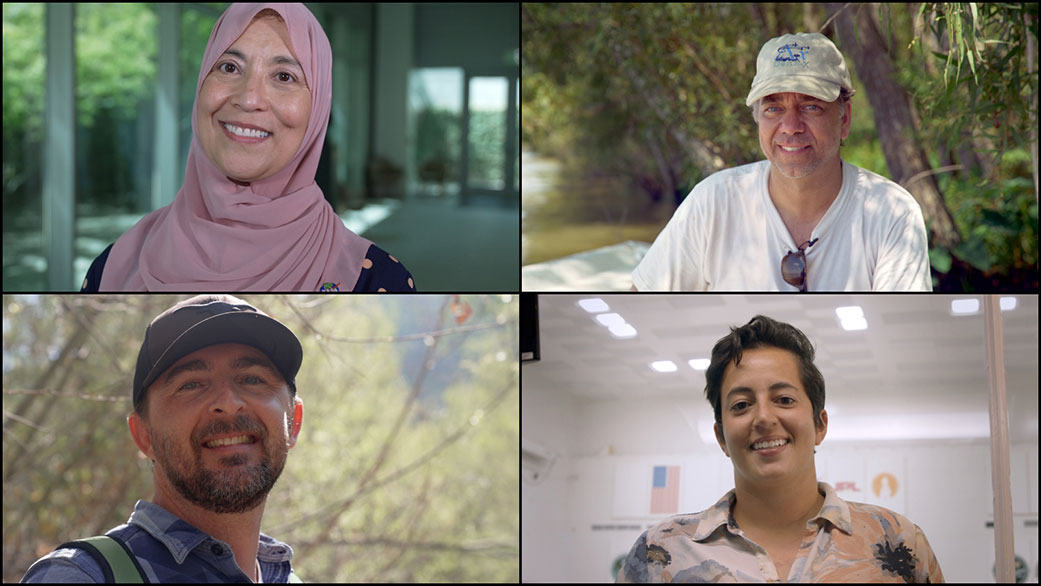Vital Signs of the Planet
As the international Surface Water and Ocean Topography (SWOT) mission finishes final preparations for its December launch, a new video series focuses on some of the engineers and scientists behind the satellite, which will be the first to observe nearly all water on Earth’s surface.
Led by NASA and the French space agency Centre National d’Études Spatiales (CNES), SWOT will measure the height of water in lakes, rivers, reservoirs, and the ocean. The SUV-size satellite will improve scientists’ ability to track the movement of water around the world while providing data that will help communities monitor and plan for changing water resources.
In addition, the mission will boost scientists’ understanding of how sea level rise will affect coastlines around the world and the people who live near them. SWOT will also see ocean features too small for current space-based instruments to detect, improving researchers’ understanding of their role in climate change.
More than a machine, SWOT is the culmination of years of work by a global team of engineers, scientists, and technicians committed to improving our understanding of our home planet. In this video series, you can meet team members from NASA’s Jet Propulsion Laboratory in Southern California, which manages the U.S. portion of the mission, and from the agency’s headquarters in Washington as they explain why working on SWOT means so much to them:
- Cedric David, a hydrologist who studies the world’s rivers, shares how water is the only place he feels truly comfortable because of physical challenges. As Cedric notes, SWOT will provide a global picture of freshwater resources and help improve water management, which is why he is so proud to help make a difference in protecting this precious resource.
- Christine Gebara, a mechanical engineer who helped test and integrate the spacecraft, tells the story of how she fell in love with engineering while learning to sail with the Girl Scouts on a lake near her childhood home in Houston. She reveals what inspires her most about building a spacecraft and offers advice for young women interested in engineering.
- Tahani Amer, the mission’s program executive, recalls growing up near Cairo, where her father encouraged her to study math and science – an atypical pursuit for young women in Egypt at the time. Today, she oversees several NASA Earth science missions, including SWOT. In the video, Amer shares how she’s been inspired by her Islamic faith, her family, and her colleagues.
- Marc Simard, a scientist who studies river deltas where they meet the ocean, discusses how he developed a passion for the environment in college, switching from a planned career in astrophysics to developing tools to study Earth. One of Simard’s favorite things about SWOT is that its data will help scientists better understand how sea level rise will affect coastal deltas around the world.
The full video series can be viewed here.
Watch a Q&A session with Tahani Amer on JPL’s Instagram account on Nov. 30. There will also be live chats on Instagram with Cedric David on Dec. 7, Christine Gebara on Dec. 14, and Marc Simard on Jan. 11. All three live chats will take place at noon PST, and questions can be submitted during the chats in the comments section or with the hashtag #AskNASA.
SWOT is scheduled to launch from Vandenberg Space Force Base in central California Dec. 12. NASA’s Launch Services Program, based at the agency’s Kennedy Space Center in Florida, is managing the launch service.
Updates about the satellite’s progress toward launch can be found at:
More About the Mission
SWOT is being jointly developed by NASA and CNES, with contributions from the CSA and the UK Space Agency. JPL, which is managed for NASA by Caltech in Pasadena, California, leads the U.S. component of the project. For the flight system payload, NASA is providing the Ka-band Radar Interferometer (KaRIn) instrument, a GPS science receiver, a laser retroreflector, a two-beam microwave radiometer, and NASA instrument operations.
CNES is providing the Doppler Orbitography and Radioposition Integrated by Satellite (DORIS) system, the dual frequency Poseidon altimeter (developed by Thales Alenia Space), the KaRIn radio-frequency subsystem (together with Thales Alenia Space and with support from the UK Space Agency), the satellite platform, and ground control segment. CSA is providing the KaRIn high-power transmitter assembly. NASA is providing the launch vehicle and associated launch services.
To learn more about SWOT, visit:
Additional resources:
News Media Contacts
Jane J. Lee / Andrew Wang
Jet Propulsion Laboratory, Pasadena, Calif.
818-354-0307 / 626-379-6874
[email protected] / [email protected]


